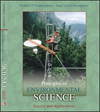 |  Principles of Environmental Science William P. Cunningham,
University of Minnesota
Mary Ann Cunningham,
Vassar College
Water: Resources and Pollution
Learning ObjectivesAfter studying this chapter, you should be able to
I.describe the important sources of water and the major ways we use it. |
 |  |  | II.appreciate the causes and consequences of water shortages around the world and what they mean in people's lives in water-poor countries. |
 |  |  | III.debate the merits of proposals to increase water supplies and manage demand. |
 |  |  | IV.apply some water conservation methods in your own life. |
 |  |  | V.define water pollution and describe the sources and effects of some major types. |
 |  |  | VI.appreciate why access to sewage treatment and clean water are important to people in developing countries. |
 |  |  | VII.plain ways to control water pollution, including technological and legal solutions. |
|



 2002 McGraw-Hill Higher Education
2002 McGraw-Hill Higher Education